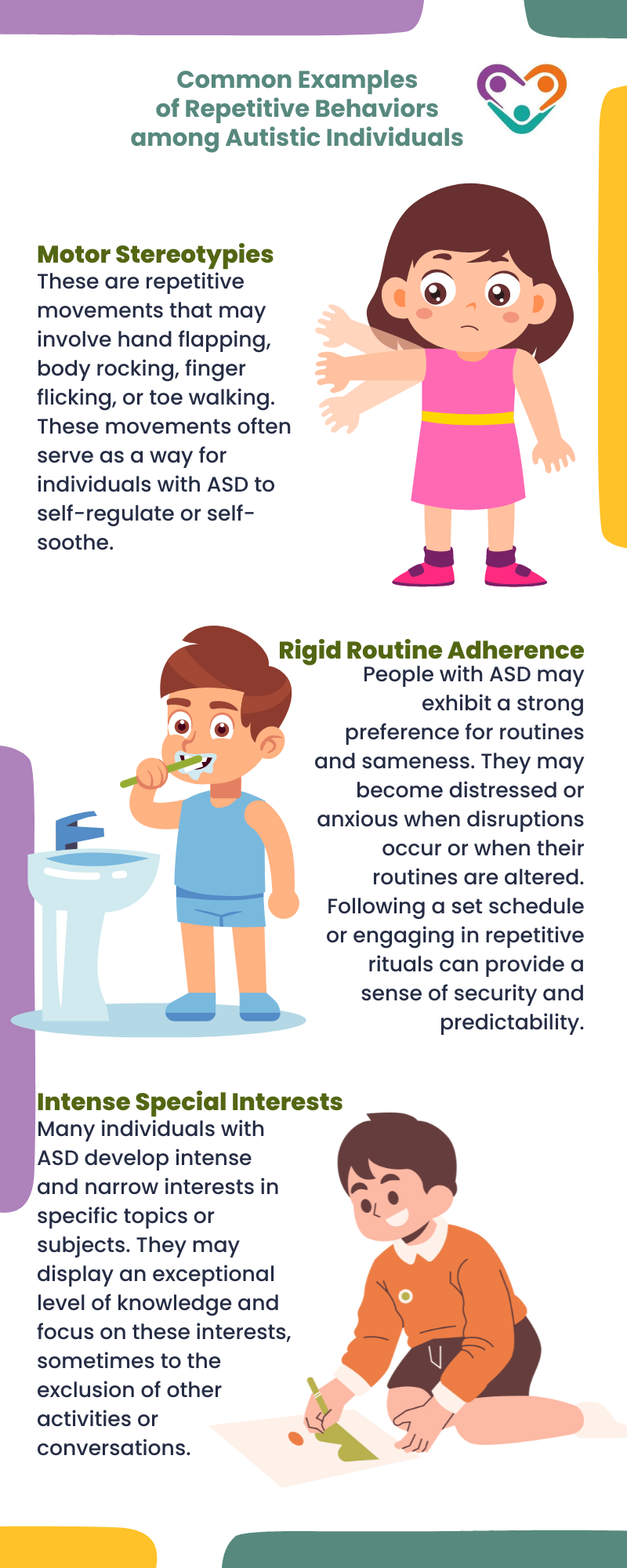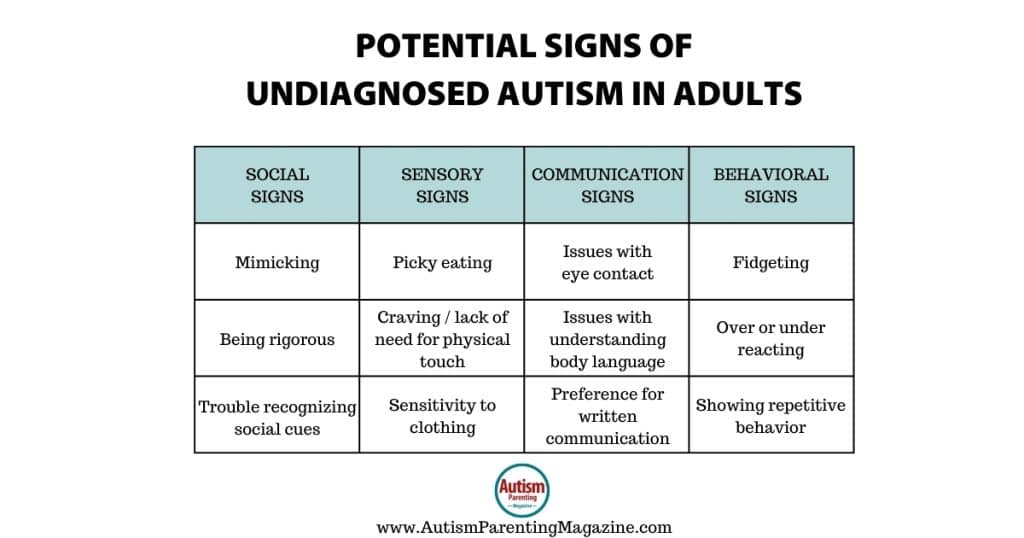How structured days benefit autistic individuals—according to an Autism Therapist
How structured days benefit autistic individuals—according to an Autism Therapist
Blog Article
Understanding the Impact of Behavioral Autism on Life and Social Communications
You could not understand just how deeply behavioral autism impacts life and social interactions. Individuals on the spectrum usually browse a globe filled with communication obstacles and sensory overload. These challenges can bring about irritation and isolation, affecting their connections and overall health. Comprehending these nuances is essential for fostering encouraging settings. What techniques can we apply to create more meaningful links and comprehensive rooms? The responses could amaze you.
Defining Behavior Autism and Its Qualities
Behavior autism, commonly referred to as autism range condition (ASD), encompasses an array of conditions defined by challenges in social communication, communication, and recurring actions. You might observe that individuals with ASD usually have a hard time to analyze social hints, which can cause misunderstandings in discussions. They may find it tough to develop eye contact or participate in tiny talk, making social situations really feel frustrating.
Communication difficulties can materialize in numerous ways, from delayed speech development to a choice for making use of fewer words. Repeated actions, such as hand-flapping or rocking, can work as coping systems to take care of tension or sensory overload. These features can exceptionally influence daily life, making it essential for you to comprehend and support those with ASD. By acknowledging these attributes, you can foster an environment that advertises approval and encourages effective communication, helping individuals with autism grow in their day-to-day interactions.
The Spectrum of Autism: Recognizing Irregularity in Habits
Autism range condition (ASD) isn't a one-size-fits-all diagnosis; it varies widely amongst people. You might come across individuals who are very spoken and involve conveniently in conversations, while others might choose solitary tasks or communicate non-verbally.
Moreover, the way individuals with ASD react to sensory input can differ considerably; some may be overwhelmed by loud sounds or intense lights, whereas others prosper in boosting environments. The range also consists of differences in social communications; some people may struggle to analyze social signs, while others navigate social settings with loved one simplicity. Understanding this irregularity is vital, as it helps you value each person's special experience and tailor assistance to their particular demands, fostering an extra comprehensive environment for everybody.
Interaction Difficulties Dealt With by Individuals With Autism
When you interact with people on the autism spectrum, you might discover their distinct communication challenges. They usually encounter difficulties with both spoken and nonverbal hints, which can impact their social interactions. Understanding these obstacles is crucial for cultivating much better connections and support.

Verbal Communication Problems
Numerous individuals on the autism spectrum experience verbal interaction troubles that can significantly affect their daily interactions. Your tone, volume, or rate could not straighten with social assumptions, triggering others to misinterpret your intentions. Identifying these difficulties can help you and your assistance network establish approaches to enhance communication and cultivate much better connections with others in your day-to-day life.
Nonverbal Interaction Barriers
Spoken communication isn't the only difficulty people on the autism range face; nonverbal communication barriers can be simply as considerable. You could discover it tough to interpret body movement, facial expressions, and eye call, which are crucial for efficient interaction. These difficulties can lead to misconceptions or misinterpretations of social signs, making interactions really feel frustrating or complicated. You might have a hard time to reveal your very own feelings through nonverbal methods, leaving others uncertain of your purposes or sensations. This disconnect can produce feelings of seclusion and irritation. Recognizing these barriers is critical for fostering understanding and compassion in your interactions. By addressing nonverbal interaction, you can find approaches to boost your social experiences and improve your overall lifestyle.
Social Interaction Impacts
Social interactions can often really feel frustrating due to the one-of-a-kind interaction challenges faced by individuals with autism. Recognizing these obstacles can aid you find techniques to improve interaction, such as practicing social skills in safe settings or making use of aesthetic aids. Recognizing your needs allows you to browse social communications with greater confidence and ease.
Social Communication and Partnership Building in Autism
While structure relationships can be challenging for individuals with autism, comprehending their special point of views and interaction designs can foster meaningful connections. You could observe that several people on the range choose straight communication and might fight with social cues or small talk. By being simple in your communications, you can aid create an atmosphere where they really feel comfy.
Engaging in shared interests can likewise offer as a bridge to deeper connections. Whether it's a pastime, a favored program, or a mutual passion, these typical threads can open doors to friendship.
Day-to-day Live Regimen: Browsing Challenges and Methods
Maneuvering day-to-day live routines can be particularly challenging for individuals with autism, especially when unexpected modifications happen. You may locate convenience in having a structured routine, as it aids you expect what's following. When disturbances occur, it's typical to feel overloaded or nervous. To navigate these challenges, consider implementing visual timetables or lists. These tools can offer quality websites and peace of mind.
Developing a regimen that includes sensory breaks can also be useful. You can plan time-outs throughout your day to recharge. It's necessary to connect with those around you, letting them recognize your needs and choices. This helps produce an understanding setting.
Lastly, technique mindfulness methods to take care of stress and anxiety and anxiety. Straightforward breathing exercises or grounding strategies can make a significant distinction. By incorporating these approaches, you can boost your daily routine and decrease disturbances, making life feel extra workable.
Strengths and Capabilities of Individuals on the Autism Range
Comprehending everyday life routines is just one element of the autism experience. Lots of individuals on the autism spectrum have exceptional toughness and capacities that set them apart.
In addition, your memory abilities often radiate, specifically in locations of passion. Aba Therapist Near Me. This knack for retaining information can make you an important resource in fields like art, innovation, or science. You might additionally show solid aesthetic reasoning, allowing you to imagine complicated concepts wikipedia reference and address troubles artistically
Furthermore, your special point of view on the world can cultivate empathy and understanding in others, enriching social communications. Embracing these toughness not just increases your self-confidence however additionally aids others value the diverse skills you bring to the table.
Developing Inclusive Environments for People With Autism
Developing comprehensive environments for people with autism begins with developing sensory-friendly spaces that provide to their distinct demands. You can additionally promote opportunities for social communication, assisting to build connections and friendships. By making these changes, you'll add to a much more welcoming ambience for every person.
Designing Sensory-Friendly Spaces
While designing sensory-friendly rooms, it's vital to mirror on the one-of-a-kind demands of people with autism. Start by picking calming colors and soft lights to create a relaxing environment. Integrate peaceful zones where individuals can reenergize and retreat when overwhelmed. You'll want to minimize loud sounds and diversions, using soundproof materials or white noise equipments to help preserve serenity. Think about tactile aspects like soft materials or fidget-friendly items that can give comfort. Determine that areas are versatile, enabling easy rearrangement to accommodate web link different activities. Include visual schedules or clear signage to help individuals navigate the space with confidence. By attentively integrating these aspects, you can produce an inviting environment that sustains sensory demands and advertises total wellness.
Advertising Social Communication Opportunities
Creating sensory-friendly rooms not just addresses specific comfort but additionally sets the stage for significant social communications among people with autism. Urge peer mentoring, combining people with autism with supportive peers that can guide them with social circumstances. By carrying out these strategies, you can improve social possibilities, assisting people with autism build relationships and reinforce their social skills in a risk-free, welcoming atmosphere.

Often Asked Concerns
Just How Can Friends Support Somebody With Behavioral Autism?
You can sustain a friend with behavior autism by holding your horses, paying attention actively, and appreciating their boundaries. Participate in activities they take pleasure in, connect openly, and create a comfy setting where they feel valued and comprehended.
What Resources Are Readily Available for Moms And Dads of Children With Autism?
You can discover numerous resources for moms and dads of children with autism, including assistance groups, academic sites, and local social work. Attaching with various other parents can additionally offer important understandings and shared experiences to help navigate obstacles.
Can Behavioral Autism Modification Gradually?

Yes, behavioral autism can change over time. You may notice changes in interaction, social skills, and actions as your kid expands. Early intervention and assistance frequently play essential duties in these developmental adjustments.
How Do Sensory Level Of Sensitivities Affect Day-to-day Live?
Sensory sensitivities can make daily experiences overwhelming. You may battle with loud sounds or brilliant lights, resulting in tension or avoidance. Discovering atmospheres that accommodate your demands can greatly enhance your comfort and total every day life.
What Are Typical Misconceptions About Behavioral Autism?
You may assume behavior autism only influences communication skills, yet it's more complex. Lots of assume people do not have compassion or knowledge, which isn't real. Understanding these false impressions aids foster approval and assistance for those on the range.
Behavioral autism, frequently referred to as autism spectrum condition (ASD), encompasses a variety of problems defined by obstacles in social communication, interaction, and recurring actions.Social communications can usually really feel frustrating due to the unique communication difficulties dealt with by people with autism.Designing sensory-friendly spaces not only addresses individual convenience yet additionally establishes the phase for significant social communications amongst people with autism. Urge peer mentoring, pairing individuals with autism with supportive peers that can direct them with social circumstances. By executing these approaches, you can boost social possibilities, assisting individuals with autism build relationships and reinforce their social skills in a safe, inviting atmosphere.
Report this page